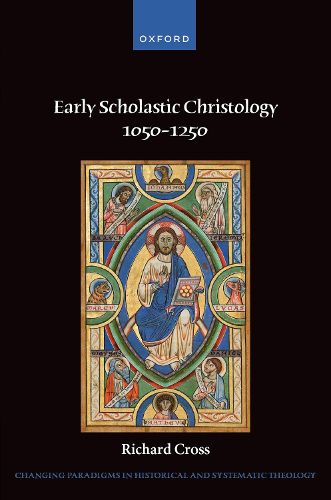Readings Newsletter
Become a Readings Member to make your shopping experience even easier.
Sign in or sign up for free!
You’re not far away from qualifying for FREE standard shipping within Australia
You’ve qualified for FREE standard shipping within Australia
The cart is loading…






This book traces developments in Christology--and specifically the metaphysics of the union of divine and human natures in one person--from 1050 (the age of Anselm of Canterbury) to 1250 (the age of Albert the Great). During the first part of the period, the key issue is the conflict between Augustine's homo assumptus (assumed man) Christology, defended by the Victorines, and that of Boethius's Chalcedonian Christology, defended by Gilbert of Poitiers (sometimes known as the 'subsistence' theory). By 1180, the latter of these was almost universally accepted. A third view, apparently accepted by Peter Lombard among others, according to which it is not true that Christ as man is something--the non-aliquid Christology--was condemned in 1177.The second part of the book traces the way in which theologians attempted to develop the presentation of Conciliar Christology by working out inchoate solutions to some of the metaphysical questions that the issue raises: what is the nature of the hypostatic union between the two natures, or the human nature and the divine person--is it something created, or something uncreated? And, given that the human nature is a particular substance, what prevents it from being a person? Theologians used insights from both of the rejected theories (the homo assumptus Christology and the non-aliquid Christology) in attempting to answer these issues.The early thirteenth century saw both the founding of the universities of Paris and Oxford, and the founding of the Franciscan and Dominican orders. The book explores the impact of these religious identities on the formation of Christological teaching.
$9.00 standard shipping within Australia
FREE standard shipping within Australia for orders over $100.00
Express & International shipping calculated at checkout
Stock availability can be subject to change without notice. We recommend calling the shop or contacting our online team to check availability of low stock items. Please see our Shopping Online page for more details.
This book traces developments in Christology--and specifically the metaphysics of the union of divine and human natures in one person--from 1050 (the age of Anselm of Canterbury) to 1250 (the age of Albert the Great). During the first part of the period, the key issue is the conflict between Augustine's homo assumptus (assumed man) Christology, defended by the Victorines, and that of Boethius's Chalcedonian Christology, defended by Gilbert of Poitiers (sometimes known as the 'subsistence' theory). By 1180, the latter of these was almost universally accepted. A third view, apparently accepted by Peter Lombard among others, according to which it is not true that Christ as man is something--the non-aliquid Christology--was condemned in 1177.The second part of the book traces the way in which theologians attempted to develop the presentation of Conciliar Christology by working out inchoate solutions to some of the metaphysical questions that the issue raises: what is the nature of the hypostatic union between the two natures, or the human nature and the divine person--is it something created, or something uncreated? And, given that the human nature is a particular substance, what prevents it from being a person? Theologians used insights from both of the rejected theories (the homo assumptus Christology and the non-aliquid Christology) in attempting to answer these issues.The early thirteenth century saw both the founding of the universities of Paris and Oxford, and the founding of the Franciscan and Dominican orders. The book explores the impact of these religious identities on the formation of Christological teaching.